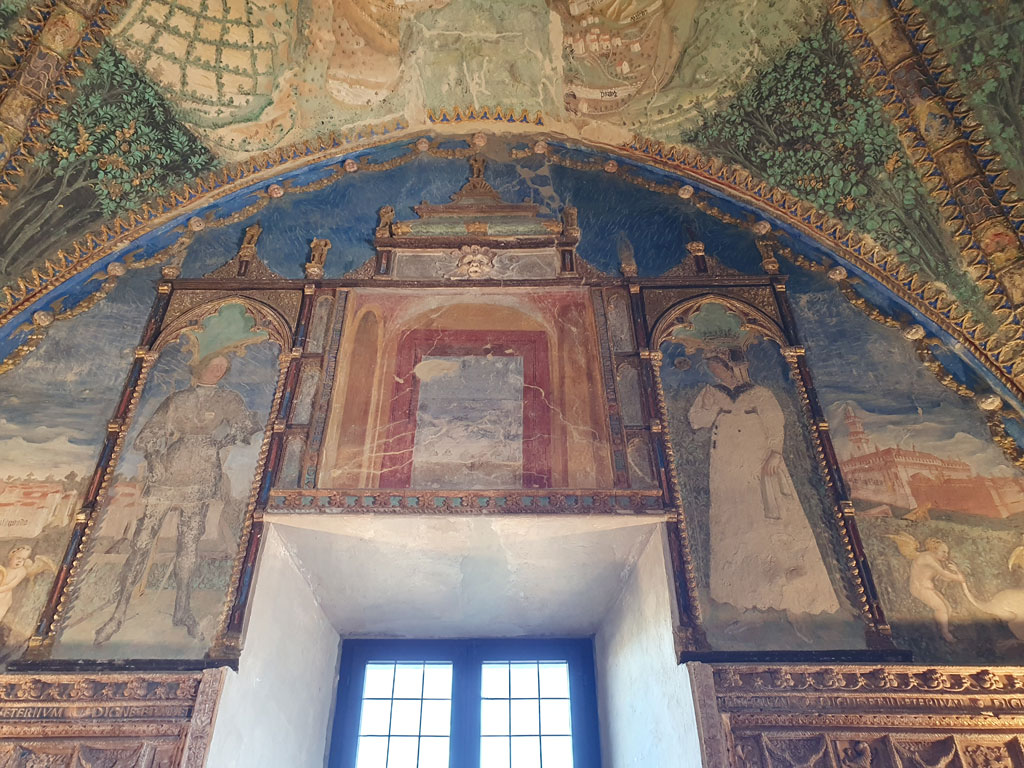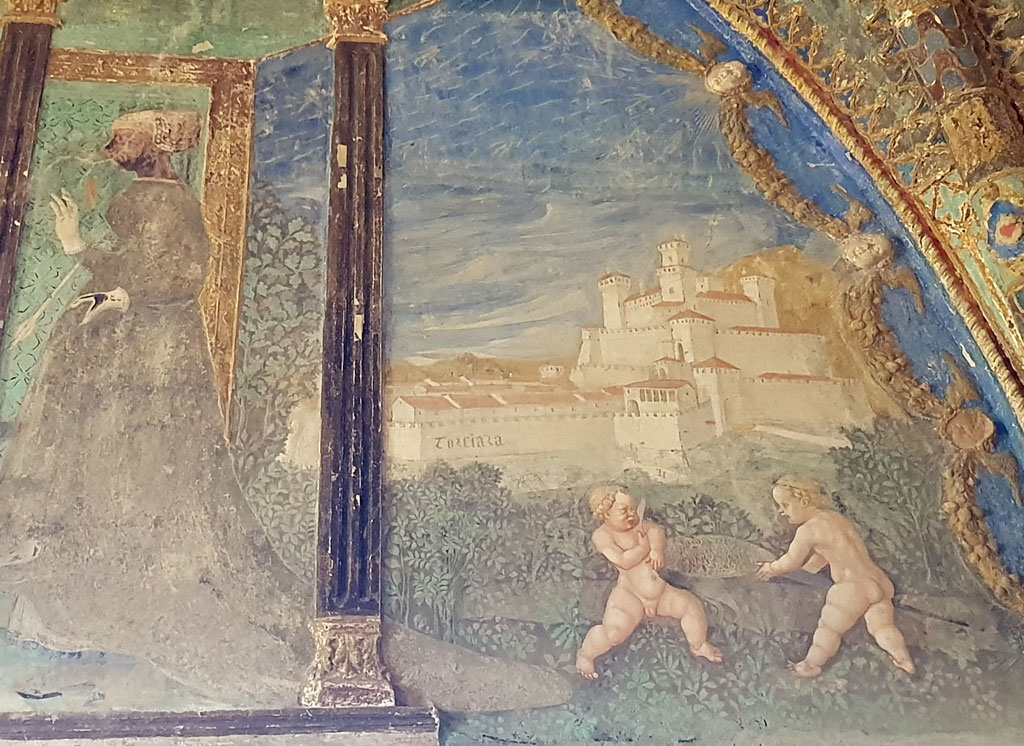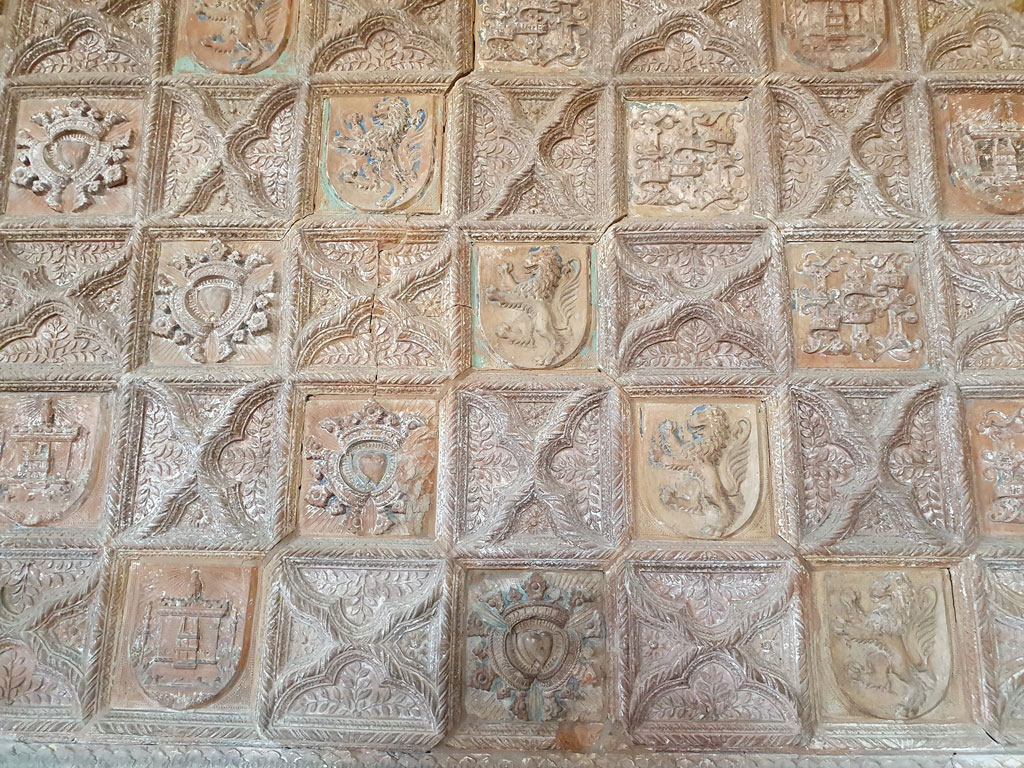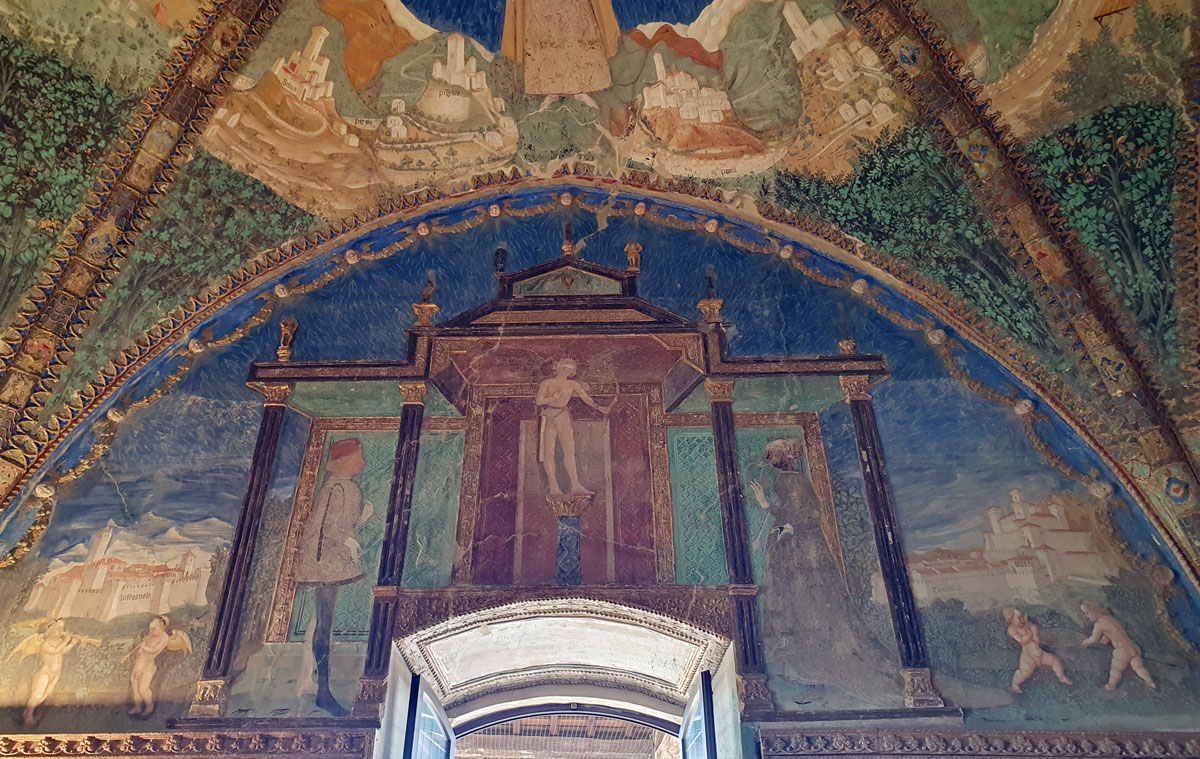Just a story
This is a story, one of countless Italian stories which circulate, retold over years and over centuries.
This particular story is a love story; always a good subject, and a convenient one for tourism marketing boards. It dates back nearly six hundred years, so there has been plenty of time for embellishment and alteration. I don’t have access to earlier, authoritative sources tracing the origin of the romantic tale, so I can’t make any claims for the authenticity of any details. This is woven from secondary sources and my own speculation. If you know Italy well, you’ll know that truth means something different here, anyway.
I was doubtful myself about the believability of this legend – until I saw the evidence with my own eyes. Somewhere in this anecdote is a kernel of truth from which a story, acccurate or not, has grown, has been shared, and become both an advertising tool and an inspiration.
The lovers of Torrechiara: Pier Maria Rossi and Bianca Pellegrini
Like so many fairy tales and courtly romances, this story begins with a castle. In the Italian region of Emilia Romagna stands the impressive, brick-towered Castello di Torrechiara. An unromantic bus ride away from Parma, the castle is positioned where low hills rise from the plain, in a strategic position overlooking road and river in a mellow green landscape. I visited last November, on a magically sunny day.
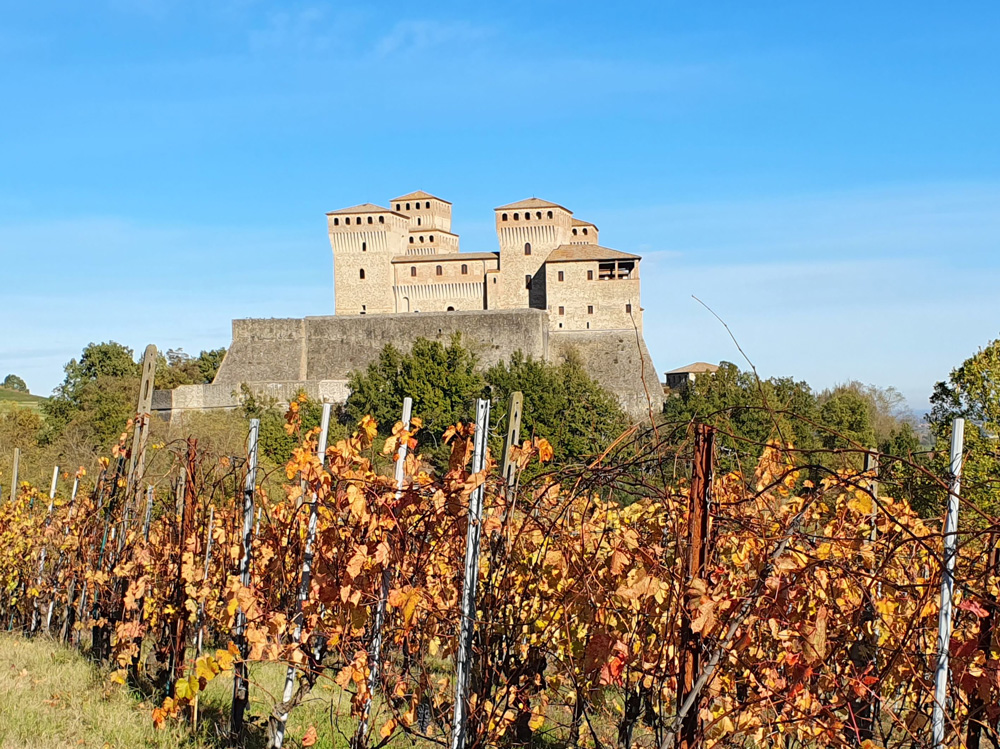
The castle was constructed in the 15th century for a powerful condottiere, a soldier of fortune, named Pier Maria Rossi but also known as Il Magnifico. He was the Count of San Secondo, a successful military leader, courtier, ambassador, and head of his family, their lands and castles. Pier Maria was also a linguist and a patron of the arts, with interests in music and astronomy.
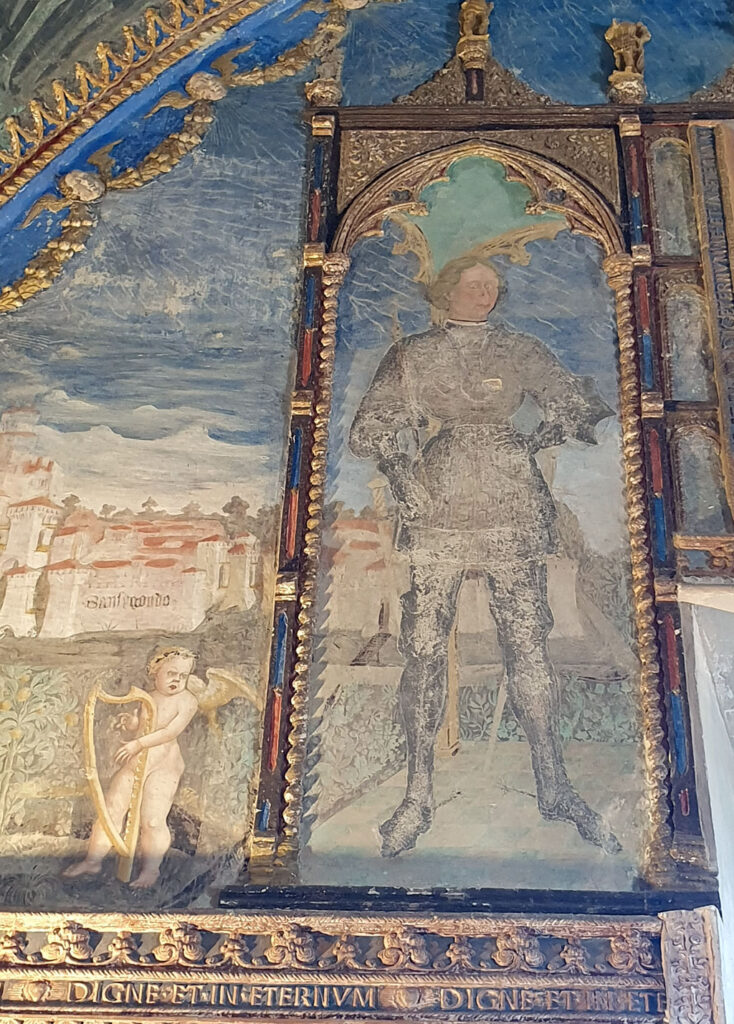
Pier Maria made a dynastic marriage at 15, so I think that given this, and the times, allowances can be made for a love story outside marriage. The love of his life, the love he’s remembered for, was with another woman: Bianca Pellegrini d’Arluno.
Pier Maria and Bianca’s relationship seems to have been long, committed and public. They’re said to have met at court in Milan in around 1440, which means they would have had four decades together. She’s believed to have been married too.
He named one of his castles, the Castello di Roccabianca, in her honour. Some sources say this castle, Torrechiara, was also built for her. At the very least, they shared some parts of their life here.
The jaw-dropping testimony to their long love affair is preserved within the castle. In the Camera d’Oro, the Golden Chamber, walls and ceiling are covered with a celebration of the two and their bond. Not much of the gold leaf which once covered the grand bedroom is left, but colourful paintings rise up over the upper walls and vaulted ceiling, above tiles bearing their family emblems and heart motifs. And the room’s decoration is a record of devotion and passion.
In the medieval traditions of courtly love, Pier Maria, in armour, and the elegant Bianca are seen in stylised scenarios in lunettes on the four walls. Cupid, between the two of them, draws back his bow and they fall in love. They present each other with symbolic tokens of true love and faithfulness, the heroic warrior sometimes kneeling before his lady love.
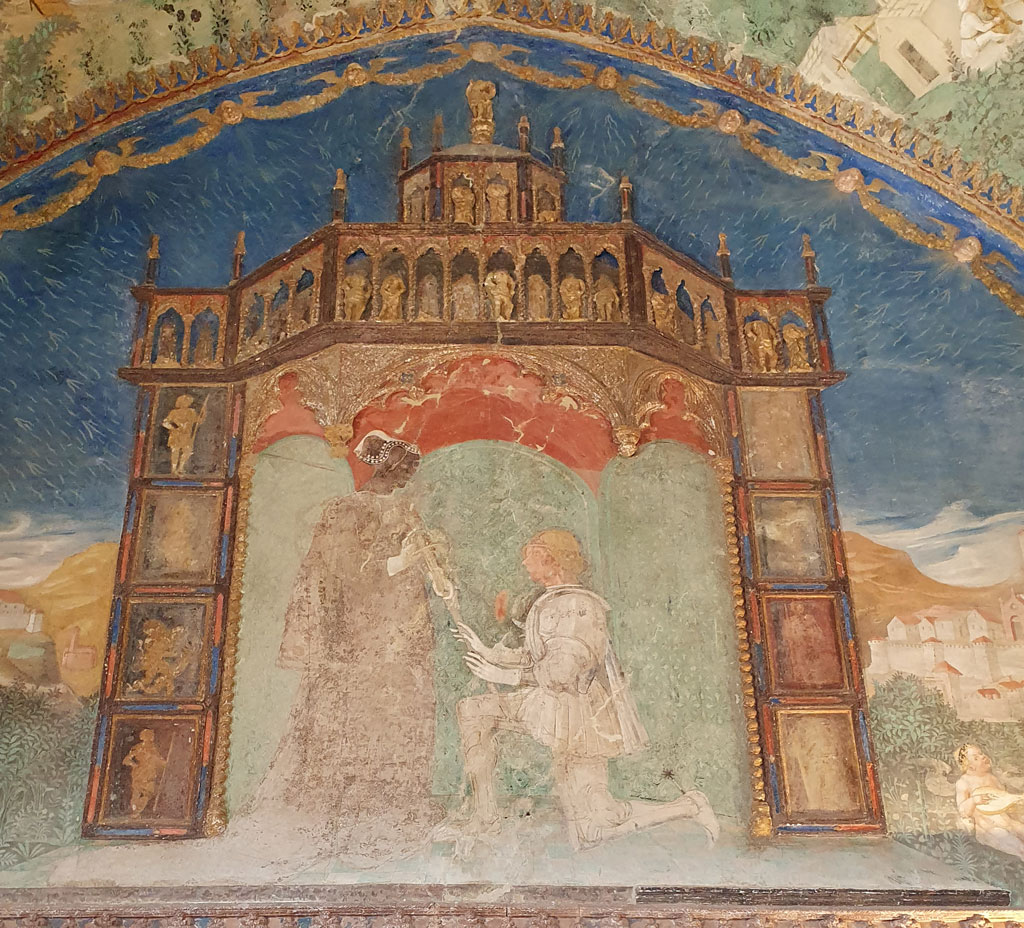
Overhead on the vividly-painted ceiling against a bold blue sky are scenes of a pilgrimage in the name of love. An elegant figure identified as Bianca, whose family name means ‘pilgrims’, is shown travelling on foot among a landscape of hills and castles. She is seeking her lover on a romantic quest through the lands belonging to the Rossi family (Torrechiara itself is among the castles celebrated here).
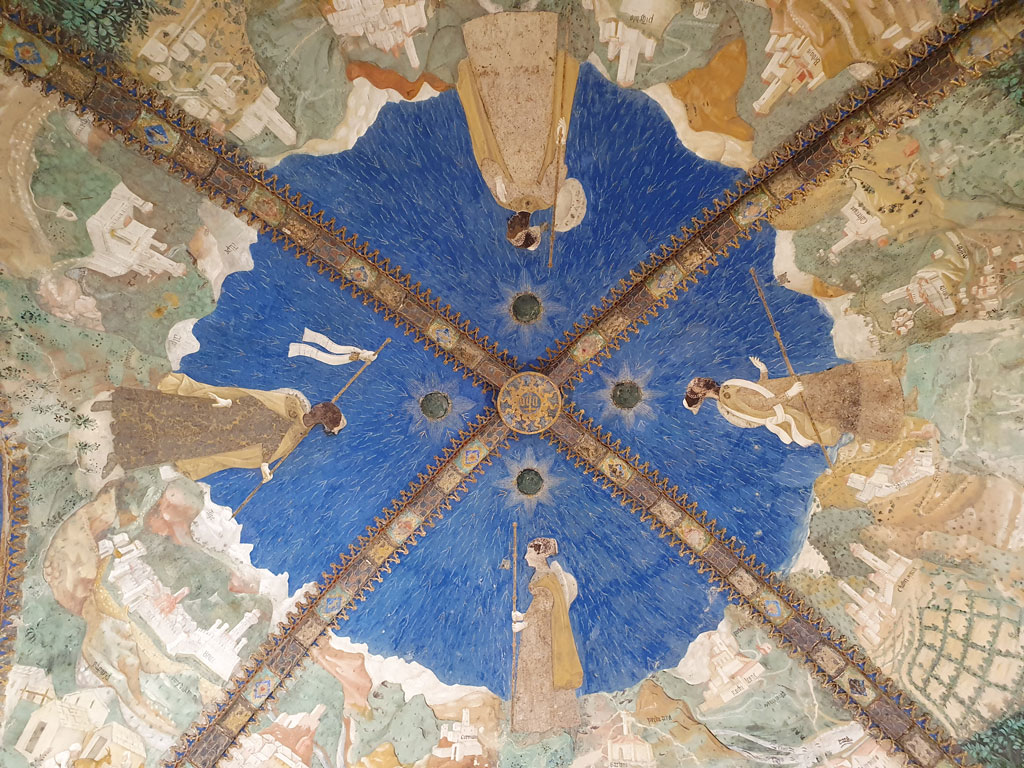
In this age of Instagram we’re used to people celebrating themselves. But it’s still quite something to imagine these two sleeping, waking, living surrounded by such intense and vibrant tributes to their own relationship and possessions.
Finally on the wrong side in battle, Pier Maria surrendered after a siege at one of his castles in 1482. He retired to the Castello di Torrechiara, where he died shortly after at the age of 69. Some sources claim he died in the arms of Bianca, but most state that she predeceased him by two years, aged 63. It’s tempting to speculate that he may have breathed his last in his bedroom surrounded by images of her; the comforting sight of her younger self on the ceiling on her lifelong pilgrimage. They are buried together in the oratory at the castle.
A walk out of time into legend
Touring the Castello di Torrechiara and that remarkable painted bedchamber made a strong impression on me. I left the fortress with my thoughts full of the frescoes and their story.
I enjoy a romance as much as anyone, but I know it’s hard to interpret the nature of relationships in a century so different to our own. This was the end of the Middle Ages, the beginning of the Renaissance. Il Magnifico was a powerful and important man, rich in everything that was valued at the time: wealth, military prowess, lands, allies, family (he had nine children with the wife he married so young). I’d have expected a mistress, by contrast, to have had very little power or significance.
So it struck me as both surprising and touching to see the way Pier Maria, to judge by those frescoes (if indeed he commissioned them and if indeed they depict the real-life couple), valued and respected his lover, celebrating her and their life together. That she, not he, is the active protagonist of the ceiling scenes, moving through the landscape of his (their?) properties. And that the great condottiere is painted on his knees before her, in the classic attitude of courtly love: a knight paying homage to the lady who owns his heart.
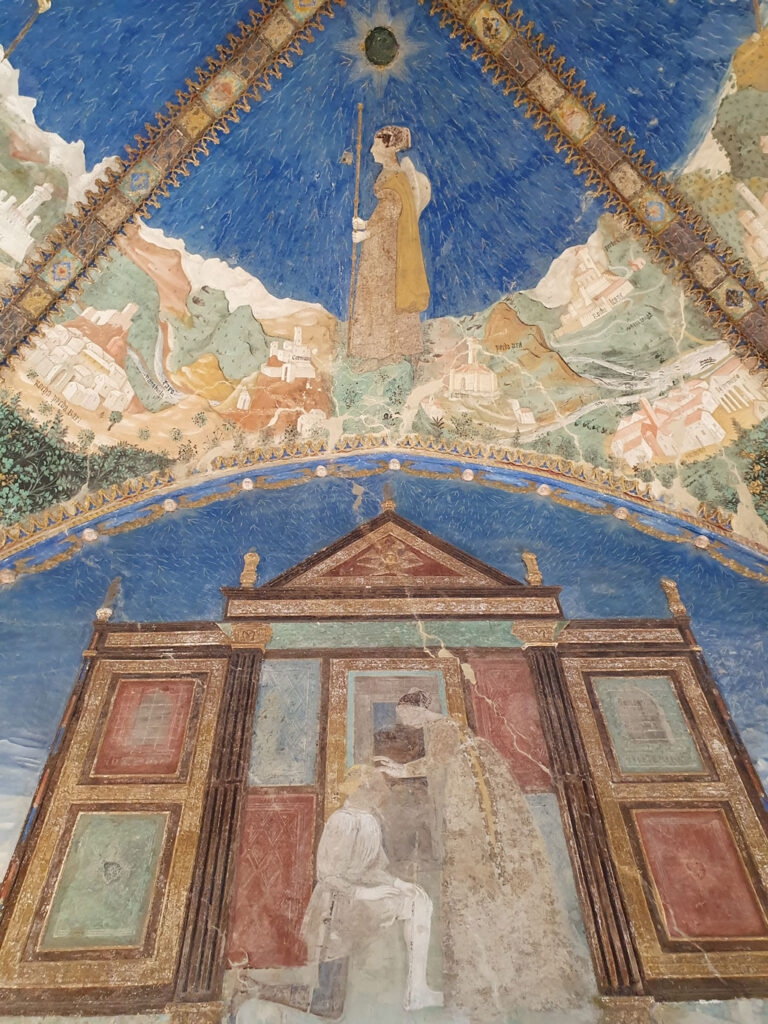
It’s occurred to me too, in writing this, that the fact they were both married to other people is important. It’s a fairly safe assumption that vanishingly few noblewomen would have had any say in a choice of husband. But this couple’s history encourages me to hope that Bianca may have chosen her own romantic destiny. There’s considerably less likelihood that she was compelled to be with Pier Maria.
From the castle I took a walk along a footpath that led into the countryside, the Sentiero d’Arte. Through trees I emerged into hillside vineyards: a timeless Italian scene. I had a sense that I was walking into history as I followed the earth path between rows of vines.
The vines were rosy in the November sunshine, their leaves turned russet and gold. Harvest had taken place long before. Occasionally I noticed an overlooked bunch of wizened black grapes; a detail that would have been familiar to every traveller passing through the Italian countryside at this time of year for millennia.
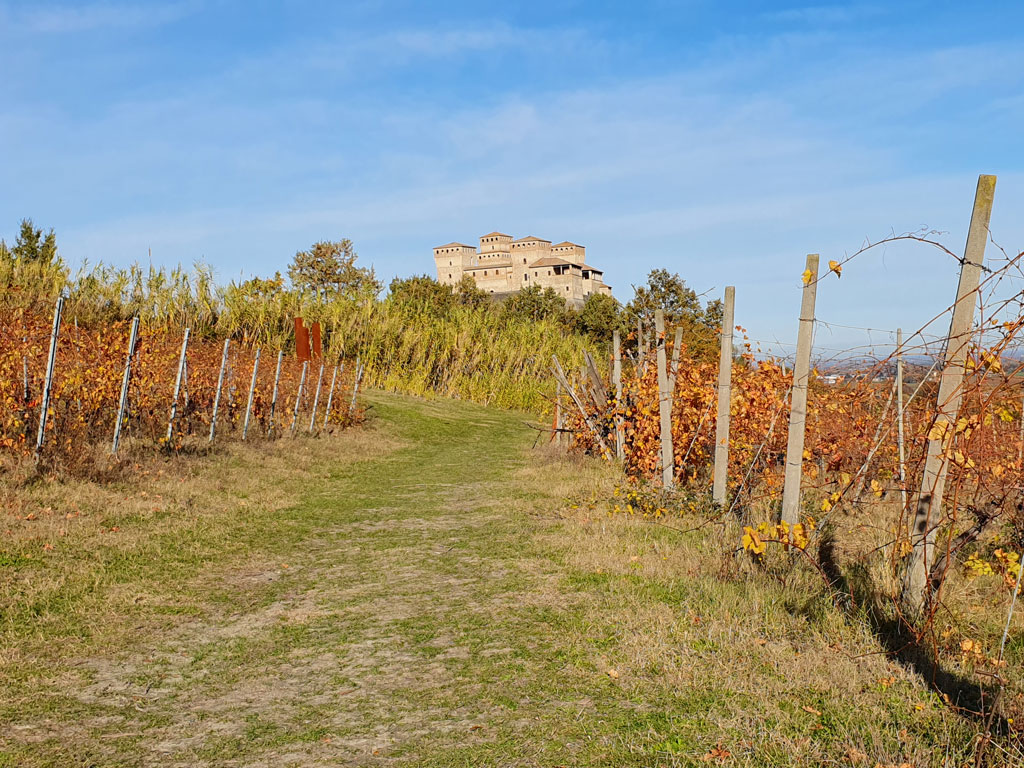
Heading back, I saw the square brick towers of the castle rising against the blue sky. I could have been walking in the twenty-first century or the fifteenth. There was no-one around, just the peace of an autumn afternoon.
I was already feeling a strong sense of time being dislocated when I looked down at my feet and saw the curving prints of horse shoes. In the earth of the footpath, mud was drying over, and it preserved the imprints of a recent traveller. Hoof prints sunk into the ground as a rider journeyed towards Torrechiara.
Now I really felt a connection across the ages. I noticed another patch of dried mud where, among the fainter tracks of modern bicycles, clustered hoof prints suggested a rider had reined in, paused on a restless horse. Maybe looking at the castle, maybe waiting, or watching, or hoping …
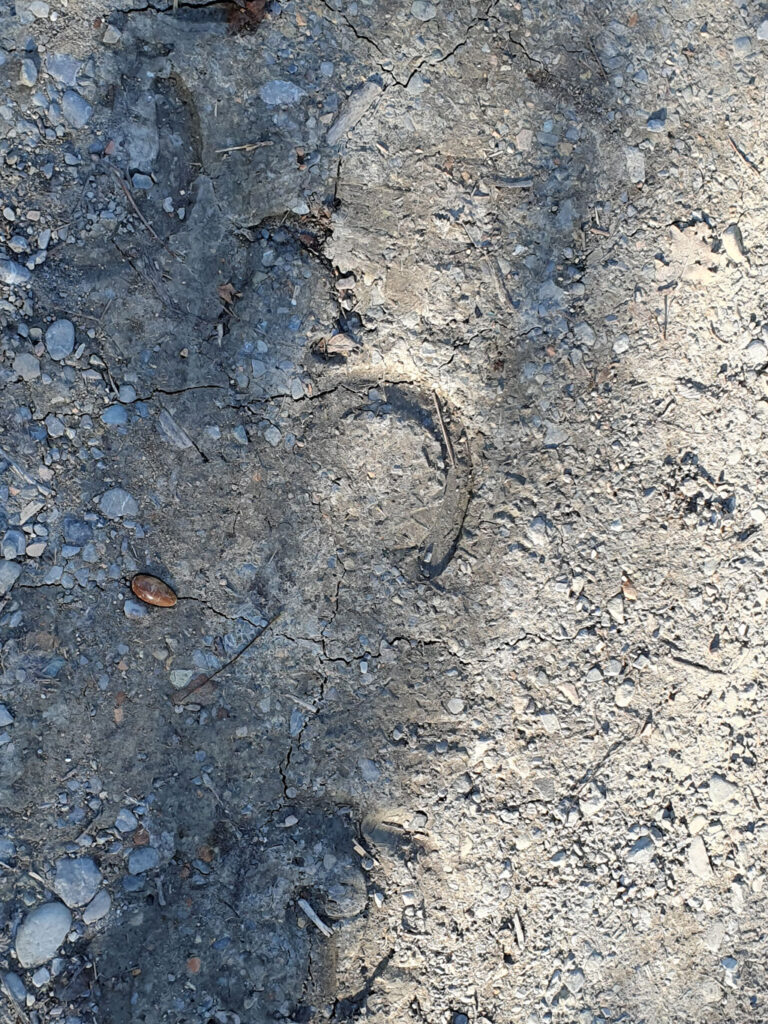
I’m not usually fanciful and I can’t lie (that’s a story for another time). So I can’t say for sure that these prints marked the passage of Pier Maria heading to the castle to see his beloved Bianca one more time. Or that the land may have been remembering Bianca, in an eternal pilgrimage of courtly love, forever seeking her lover from castle to castle across their lands.
But I can’t say it wasn’t one of the historic lovers either. If, as is customary with stories in general, and in Italy in particular, I were to pick the best version of this tale, I would undoubtedly choose the version in which the love recorded in the Torrechiara frescoes is a romance without end.
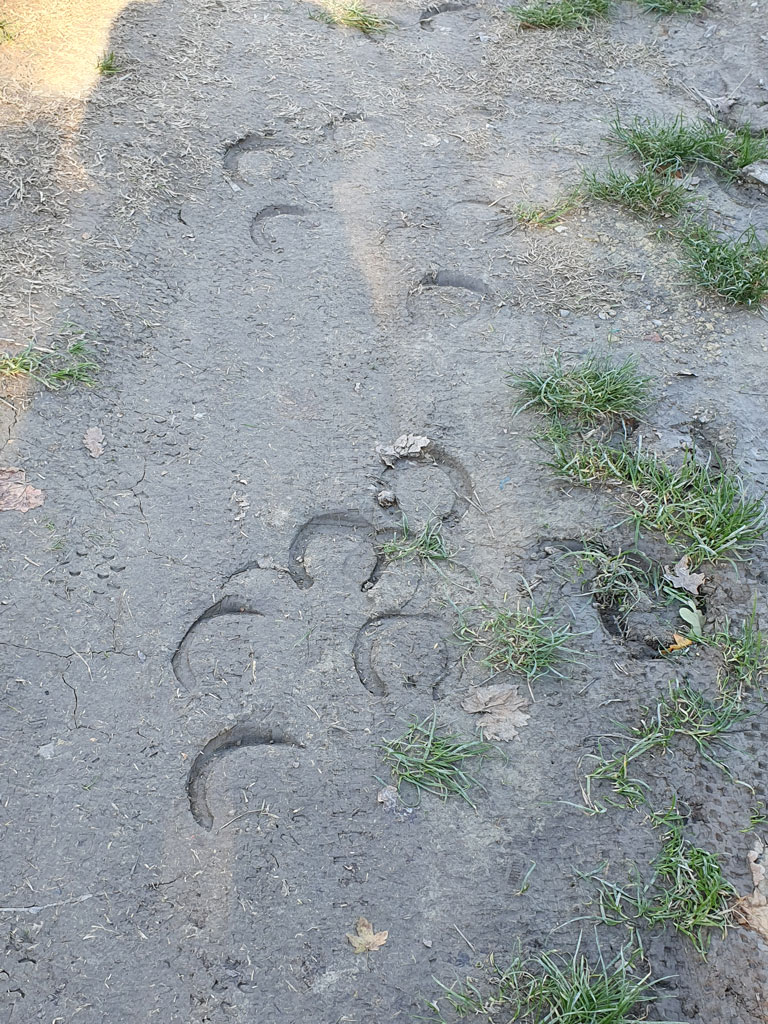
Maybe Il Magnifico rides to the castle whenever the moon is full and the stars propitious, and the lovers are reunited. Maybe they dance together still, spirits drifting through the castle’s painted chambers. Maybe it amuses them to glide around the dance studio on the castle road named after the condottiere born 600 years ago.
One thing I’m sure of: one way or another, the frescoes themselves truly keep the love alive. And thanks to modern preservation skills, it’s not hard to imagine that this painted heritage will last as long as any of us do. Or at least until earthquake or other cataclysm leaves the walls in ruins and every last trace of colour crumbled away. The legend and the frescoes have already survived six Italian centuries of vicissitudes. Perhaps as the art preserves the love story, the love preserves the art.
